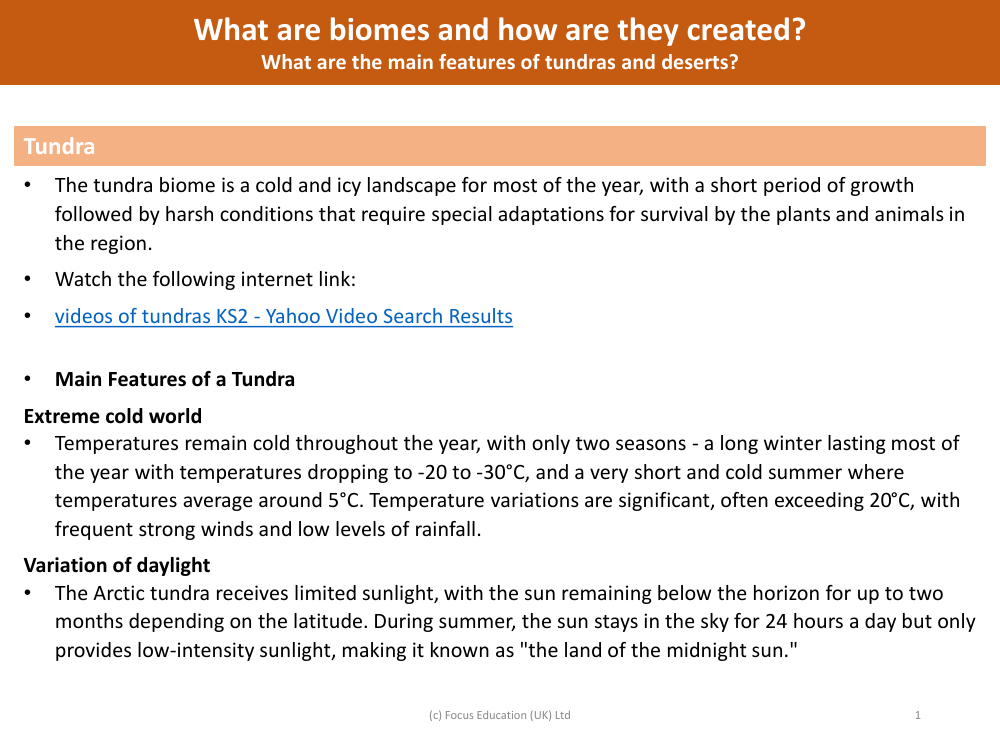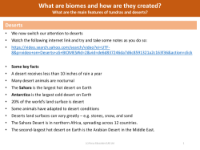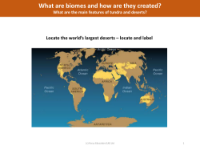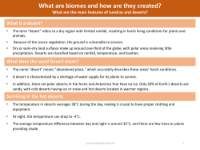Tundra - Info pack

Geography Resource Description
The tundra biome is characterized by its extreme coldness and limited growth period, which demands unique adaptations from the flora and fauna that inhabit it. The climate is harsh, with long winters where temperatures can plummet to between -20 to -30°C, and brief summers that barely reach an average of 5°C. This biome experiences significant temperature fluctuations, often more than 20°C, accompanied by strong winds and minimal rainfall. Daylight varies drastically, with the Arctic tundra experiencing periods where the sun remains below the horizon for months, and during summer, it never sets, leading to the phenomenon known as "the land of the midnight sun". The tundra's ecosystem is adapted to these conditions, with animals that have thick fat reserves and vegetation that is limited to hardy species capable of surviving in the shallow, thawing layer of soil during the fleeting summer.
Within the tundra, life must cope with the challenges posed by the permanently frozen subsoil known as permafrost, which prevents water from draining and leads to the formation of marshy areas. The vegetation structure is simple, with dwarf shrubs, grasses, mosses, and lichens being the most common, as the conditions are too severe for tall trees to thrive. Despite these limitations, the tundra supports a variety of life, including caribou, Arctic hares, and migratory birds. The biome sees significant population changes with seasonal migrations, and the melting surface ice in summer creates breeding grounds for numerous bird species. Human activity has begun to impact this fragile ecosystem, with technology-driven land use leading to pollution and climate change effects. The tundra is divided into three types: the Arctic tundra, which encircles the North Pole; the Alpine tundra, found in high mountains where trees cannot grow; and the Antarctic tundra, located in Antarctica and its adjacent islands.








